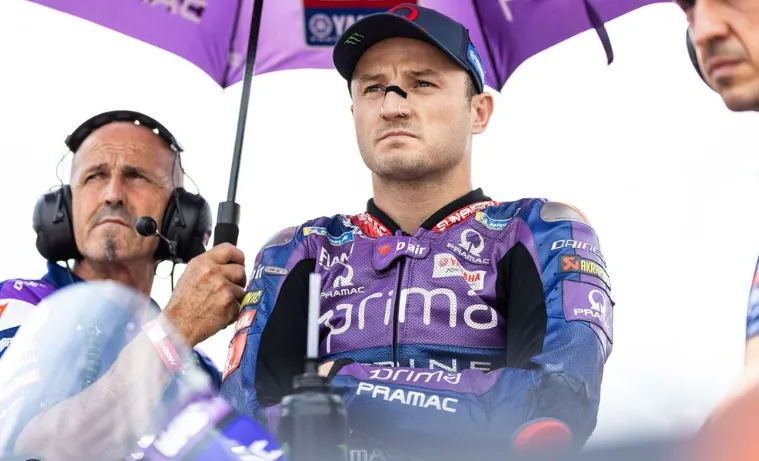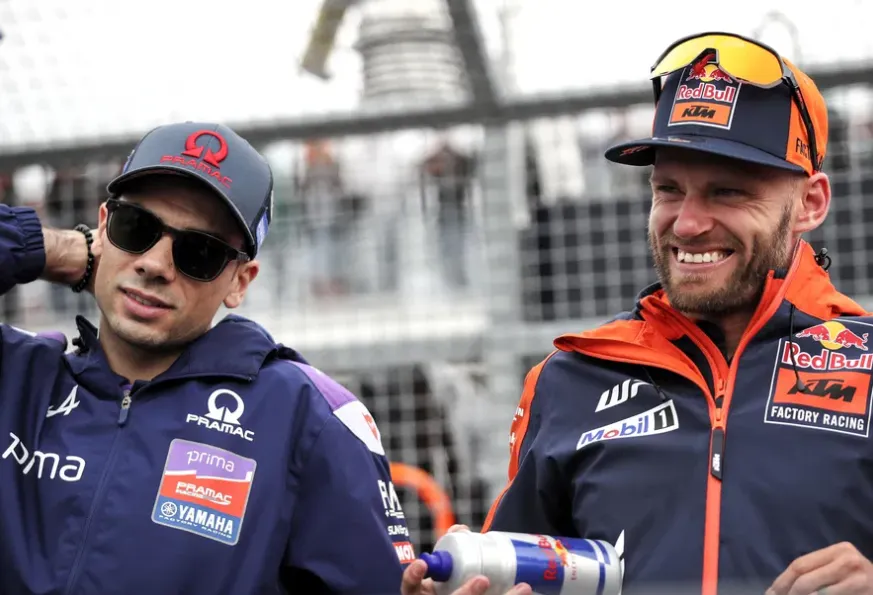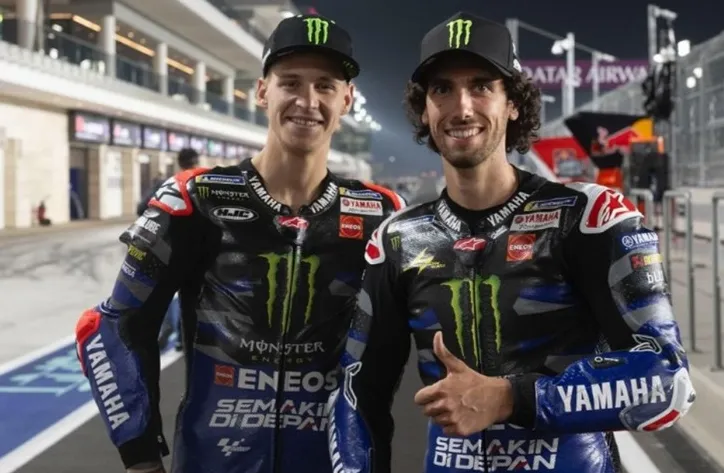
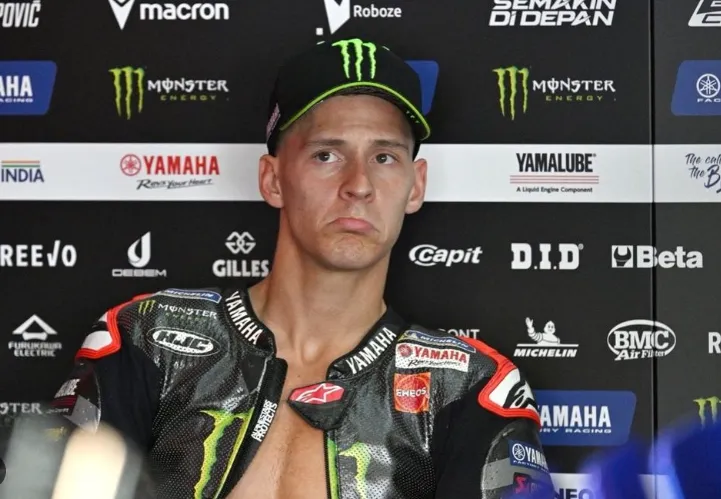
In the Rain, Quartararo’s Early Yamaha V4 Pace Hints at Big Step Forward
Yamaha’s MotoGP project may finally be showing signs of life. After several seasons of falling behind its European rivals, the Japanese manufacturer is working on a revolutionary change — abandoning its traditional inline-four engine for a completely new V4 prototype. While the official program remains under wraps, a private test at Barcelona following the Catalan Grand Prix has offered a glimpse into the bike’s potential, and the early indications are encouraging.
According to sources close to the paddock, Fabio Quartararo posted an unofficial lap time of 1’39.3 during a wet and inconsistent test day. While that time is 1.5 seconds slower than his own qualifying lap from Saturday’s Q2 session (1’37.803), the context makes the number remarkable. The test was carried out in mixed conditions, with showers on and off throughout the day, leaving the track damp and grip levels unpredictable. That Quartararo could deliver that pace “out of the box” with no prior race weekend on the bike suggests Yamaha may finally have a weapon capable of closing the gap to Ducati, KTM, and Aprilia.
A Test Shrouded in Secrecy
The Barcelona test was never meant to reveal much. It was a private session, without live timing or official team communications. Yamaha, as is typical of Japanese manufacturers, opted to keep information controlled and focused on internal evaluation rather than media spectacle. Yet, details inevitably leaked. Multiple sources have confirmed that not only Quartararo but also Alex Rins, Andrea Dovizioso, and Jack Miller took to the track during the day.
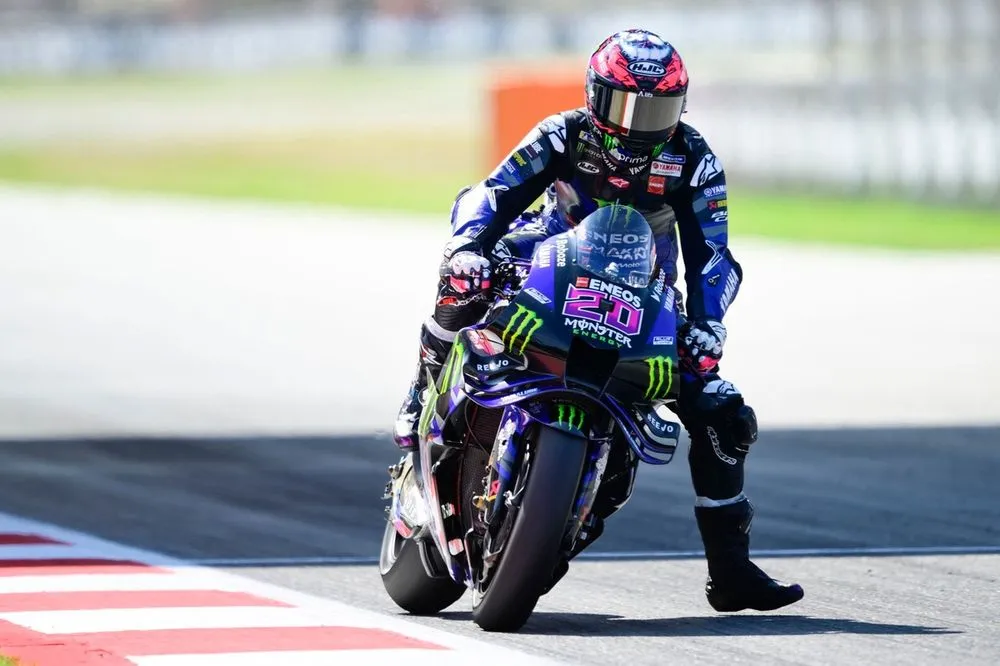
The rider lineup raised eyebrows. While Rins and Quartararo are Yamaha’s factory riders, the presence of Jack Miller — a current Ducati rider rumored to be moving to Yamaha’s satellite setup in 2026 — indicates that Yamaha may be preparing for input beyond its own garage. Dovizioso’s appearance is less surprising; as a former Yamaha and Ducati rider with a wealth of experience on both inline-four and V4 machinery, his feedback would be invaluable in shaping a competitive MotoGP engine concept.
The decision to allow Rins and Quartararo to ride the new V4 prototype instead of the current inline-four M1 suggests that Yamaha has reached a development stage where comparative laps on the existing bike would no longer provide meaningful data. This signals confidence that the V4 engine has matured to a point where Yamaha can shift its testing focus toward extracting performance rather than just ensuring reliability.
A Brave Departure from Tradition
For decades, Yamaha has been known for its silky smooth inline-four engine philosophy. The M1 became legendary under Valentino Rossi and Jorge Lorenzo thanks to its linear power delivery and exceptional cornering performance. But in modern MotoGP, corner speed alone is no longer enough. Ducati’s relentless horsepower advantage, KTM’s agile chassis combined with brutal drive, and Aprilia’s aerodynamics have left Yamaha struggling to keep up.
The move to a V4 layout is, in many ways, a radical admission: the old philosophy has reached its limit. A V4 offers inherently better packaging for aerodynamics, more balanced weight distribution, and most importantly, greater potential for horsepower and torque delivery suited to MotoGP’s current tire and aero-dependent racing style.
Quartararo has been one of Yamaha’s most vocal critics regarding the lack of top-end speed. Despite winning the 2021 World Championship, he has since been forced to override the M1, often losing ground on the straights and unable to recover it in the corners. This new test, therefore, represents more than just engineering evolution — it is Yamaha’s first real chance to give its star rider a bike capable of fighting at the front again.
The Conditions Make the Lap Even More Impressive
At first glance, a 1.5-second gap from qualifying to testing doesn’t seem like headline material. But context matters. Saturday’s Q2 was run in ideal track conditions, with maximum grip, optimized tire pressures, and perfect weather. By contrast, Monday’s test took place on a track that was never fully dry, with damp patches scattered around the circuit and ambient temperatures lower than the race weekend.
In addition, testing programs are rarely focused on outright lap time. Teams spend sessions trying different engine maps, chassis configurations, and aero packages. Quartararo’s ability to post a 1’39.3 in those conditions suggests that once the bike is dialed in, the true pace could be much closer to Ducati’s benchmark — something Yamaha has been desperately lacking.
Moreover, Quartararo reportedly set the fastest time of all riders who participated in the session, including those from Honda, who were also testing at the circuit. Factory Honda riders Joan Mir and Luca Marini continued work on their new chassis and swingarm combinations, which were introduced during the race weekend. That Yamaha’s completely new engine concept could already top a test against another Japanese factory’s ongoing development efforts is a psychological boost for the Iwata-based team.
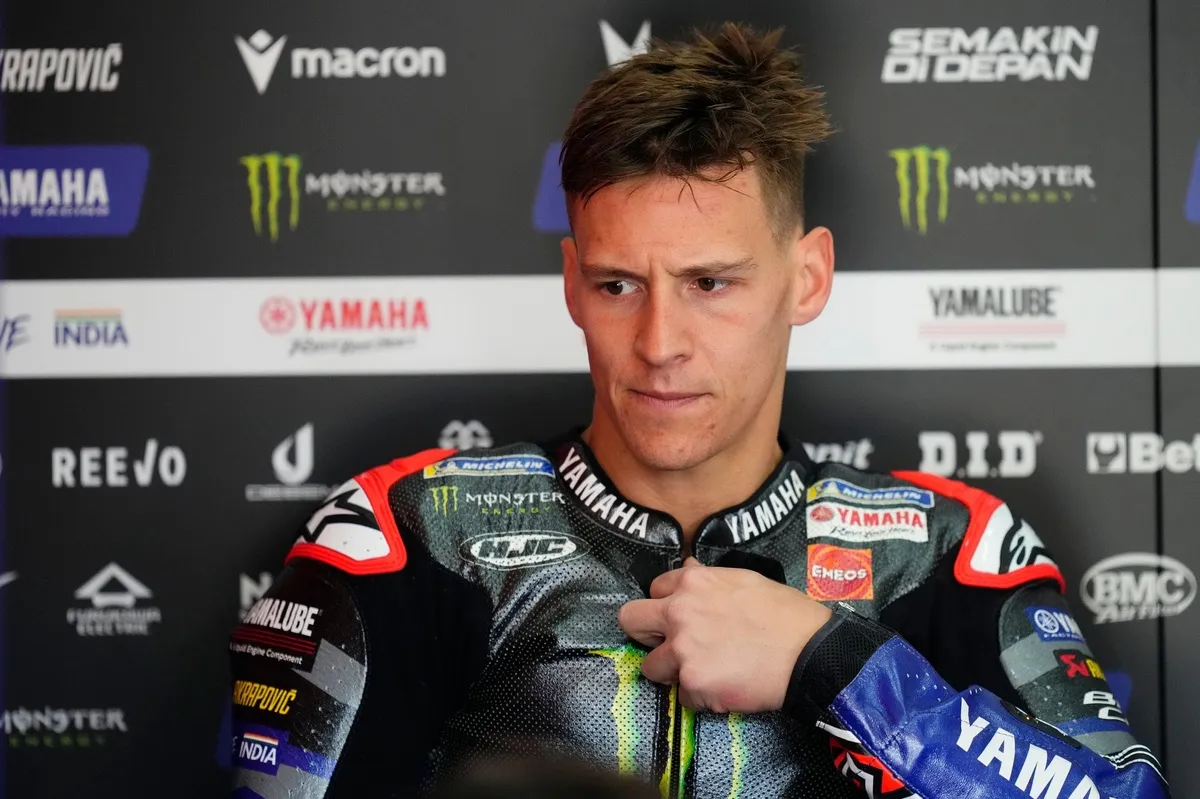
Public Debut Set for Misano
Fans won’t have to wait long to see the V4 in action. Yamaha has scheduled its first public outing for the new machine at the Misano round, where Augusto Fernandez is set to race the bike as a wildcard entry. This decision alone is intriguing — Yamaha has rarely given a prototype a competitive race debut outside of its core factory riders. Putting Fernandez on the bike could indicate a parallel development path, where feedback from a rider outside of Yamaha’s regular structure provides fresh insights.
Following Misano, the V4 will take part in the traditional post-race test on Monday, with Quartararo, Rins, and Miller expected to continue development work. This will be a crucial session. Not only will Yamaha gather more performance data under consistent conditions, but rival manufacturers will also get their first real look at the V4 concept. In MotoGP’s current arms race, any sign of progress from a struggling Japanese manufacturer is bound to shake up the competitive landscape.
The Bigger Picture
Yamaha’s V4 program represents more than just an engine redesign. It signals a cultural shift. For years, Japanese MotoGP manufacturers relied on controlled, conservative evolution rather than disruptive innovation. European manufacturers — Ducati in particular — changed the paradigm, embracing aggressive aerodynamic development, seamless gearboxes, ride-height devices, and ultra-powerful V4 engines. Yamaha’s pivot indicates that even the most traditional engineering cultures must adapt or risk fading into irrelevance.
If Quartararo’s early pace is any indication, Yamaha has a fighting chance. It’s too soon to declare victory — development hurdles remain, especially in ensuring that reliability, rideability, and electronics integration match the raw performance gains. But for the first time in years, the conversation around Yamaha is no longer about how far behind they are. It’s about how close they might be to coming back.
For Quartararo, Rins, and potentially Miller in the near future, this new machine could mean the difference between fading midfield struggles and a return to championship contention. The next few weeks — from the wildcard race at Misano to the critical Monday test — could define Yamaha’s MotoGP future. And if the rain-soaked laps at Barcelona are any preview, the future just got a lot more interesting.








